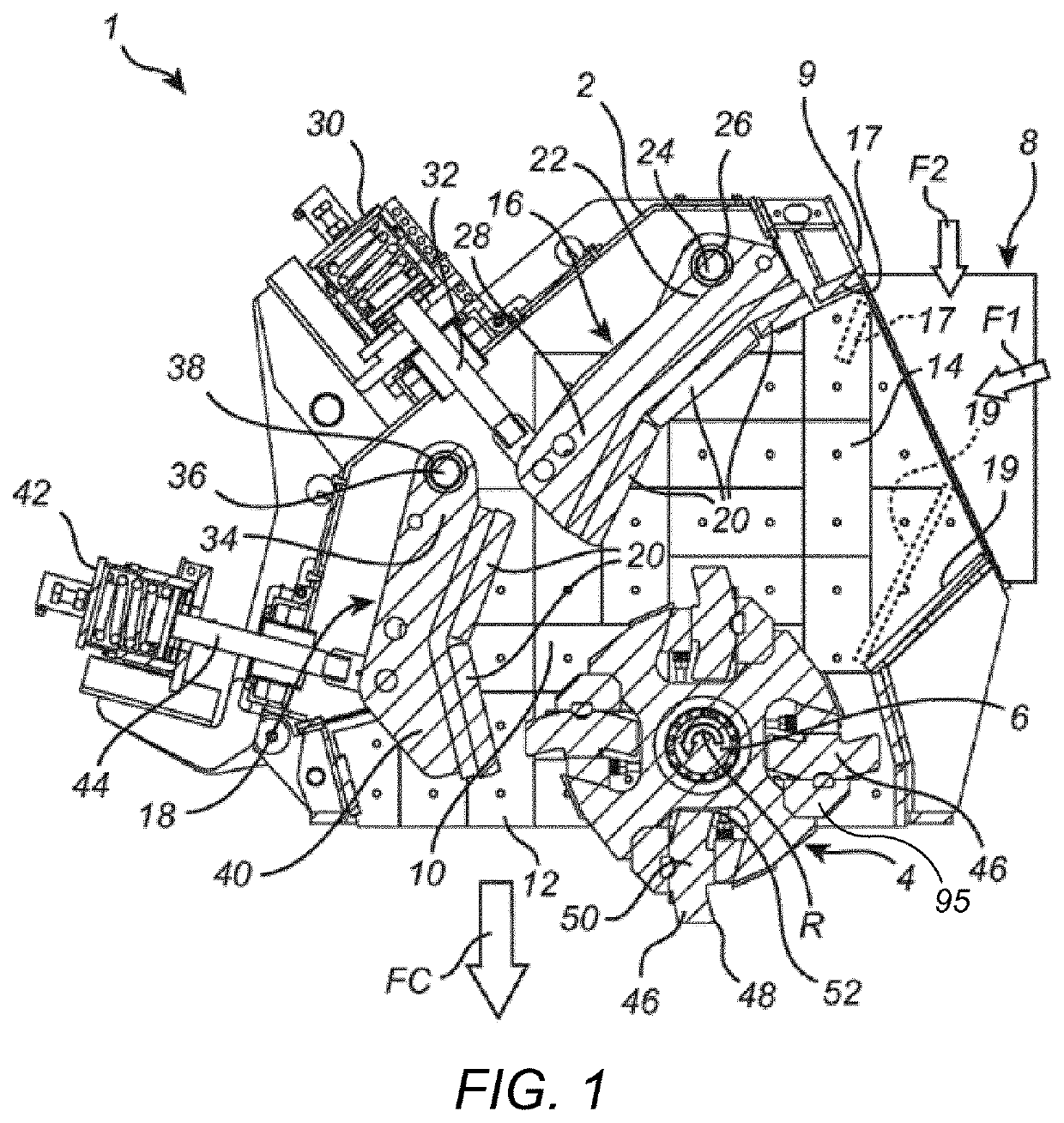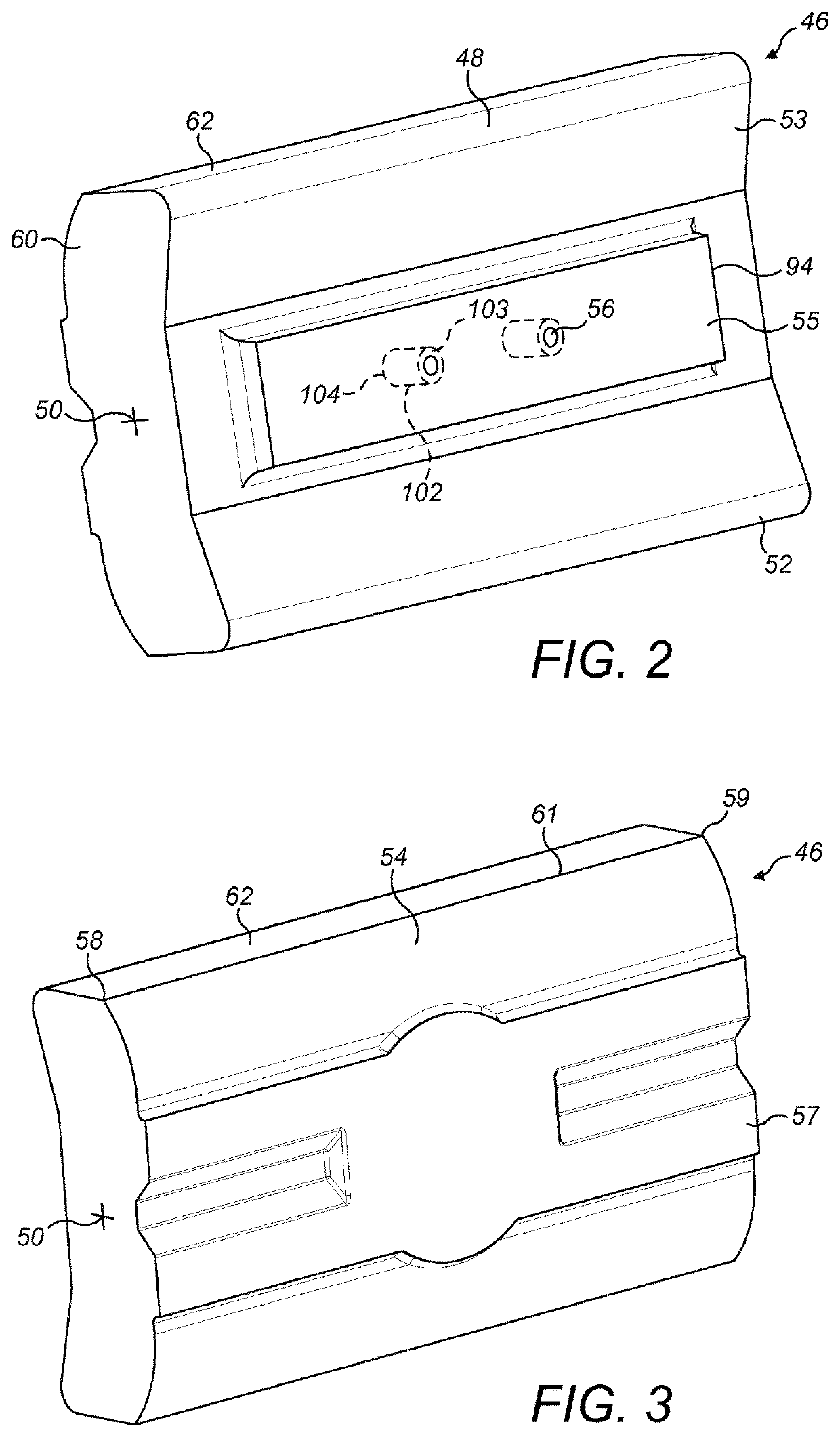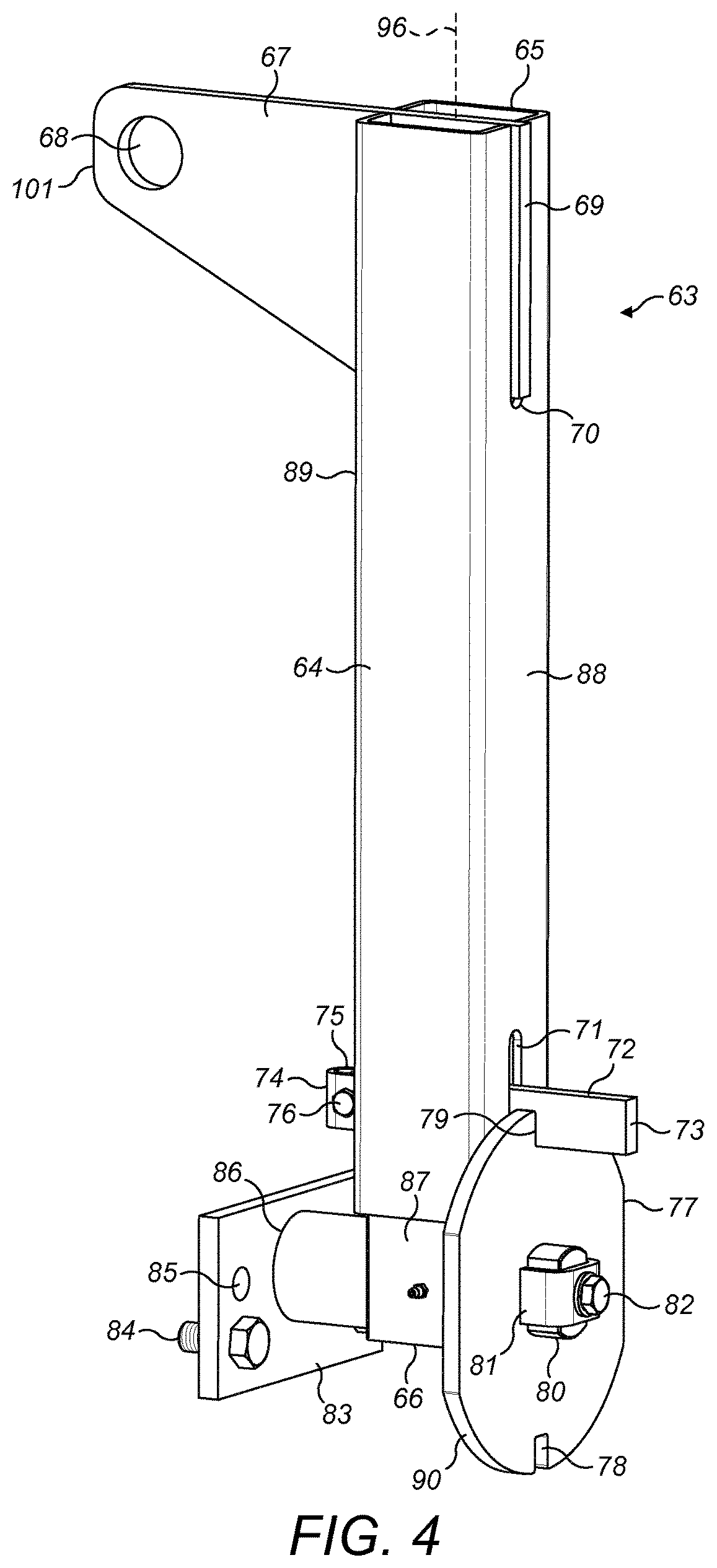Hammer for a horizontal shaft impact crusher
a horizontal shaft and impact crusher technology, applied in the field of rotor hammers, can solve the problems of operator fingers being trapped during installation and removal, significant health and safety risks, and restricted access to the sides of elongated hammers, so as to facilitate the mounting and dismounting of crusher hammer elements, reduce and eliminate
- Summary
- Abstract
- Description
- Claims
- Application Information
AI Technical Summary
Benefits of technology
Problems solved by technology
Method used
Image
Examples
Embodiment Construction
[0028]Referring to FIG. 1 a horizontal shaft impact crusher 1 (HSi-crusher) comprises a housing 2 in which an impeller indicated generally by reference 4 is rotatably mounted. A motor, (not illustrated) is operative for rotating a horizontal shaft 6 on which the impeller 4 is mounted. As an alternative to impeller 4 being fixed to shaft 6, impeller 4 may rotate around shaft 6. In either case, impeller 4 is operative for rotating around a horizontal axis, coaxial with the centre of shaft 6.
[0029]Material to be crushed is fed to a feed chute 8, which is mounted to an inlet flange 9 of housing 2, and enters a crushing chamber 10 positioned inside the housing 2 and at least partly enclosing impeller 4. Material crushed within the crusher 1 exits the crushing chamber 10 via a crushed material outlet 12. Housing 2 is provided with a plurality of interior wear protection plates 14 operative for protecting the interior of crushing chamber 10 from abrasion and impact by the material to be cr...
PUM
| Property | Measurement | Unit |
|---|---|---|
| particle size | aaaaa | aaaaa |
| particle size | aaaaa | aaaaa |
| particle size | aaaaa | aaaaa |
Abstract
Description
Claims
Application Information
 Login to View More
Login to View More - R&D
- Intellectual Property
- Life Sciences
- Materials
- Tech Scout
- Unparalleled Data Quality
- Higher Quality Content
- 60% Fewer Hallucinations
Browse by: Latest US Patents, China's latest patents, Technical Efficacy Thesaurus, Application Domain, Technology Topic, Popular Technical Reports.
© 2025 PatSnap. All rights reserved.Legal|Privacy policy|Modern Slavery Act Transparency Statement|Sitemap|About US| Contact US: help@patsnap.com



